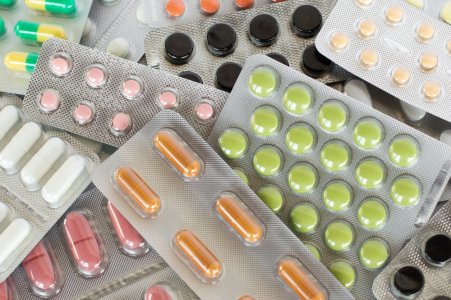You Won't Believe the Shocking Truth About Generic Drugs vs. Brand-Name Meds! What Are You Really Paying For?
By
Seia Ibanez
- Replies 6
When it comes to managing our health, medication is often a non-negotiable expense, and with the cost of living on the rise, every penny counts. That's why it's crucial to understand the difference between brand-name medicines and their generic counterparts, especially when you're looking to stretch your dollar further without compromising on quality.
So, what's the real deal with generic drugs, and are they truly as effective and safe as the brand names we've come to trust? Let's dive into the world of pharmaceuticals and uncover the shocking truth about what you're really paying for when you reach for that familiar box on the pharmacy shelf.
**What is a Generic Medicine?**
In the simplest terms, a generic medicine is essentially a twin to the brand-name original. It contains the same active ingredient, which means it should have the same therapeutic effect as its more expensive counterpart. In Australia, the Therapeutic Goods Administration (TGA) ensures that generic medicines are 'bioequivalent' to brand names. This means that if you take the same dosage of a generic medicine as you would a brand-name one, your body absorbs the same amount of the active ingredient over the same time period.
**Safety and Effectiveness of Generic Drugs**
The question of safety often arises when discussing generic drugs. The answer is clear: generic medications are just as safe as their branded siblings. They undergo the same rigorous testing and approval processes set by the TGA. Lily Pham, Vice President of the Pharmaceutical Society of Australia's NSW Branch, assures us that generic medicines meet the high standards of safety and quality expected of all medications in Australia.
**The Financial Benefits of Going Generic**
From a financial standpoint, generic drugs are the clear winners. They are often significantly cheaper than brand-name drugs. For instance, a pack of 20 Panadol Tablets might set you back $4.50, while a generic version with the same amount of paracetamol could cost as little as $0.80. That's a substantial saving, particularly for those on fixed incomes or managing multiple prescriptions.
**Differences That Might Matter**
While the active ingredients are the same, generic drugs can differ from brand names in their inactive ingredients or 'excipients.' These are substances that may affect the taste, color, or form of the medicine but do not influence its therapeutic action. However, for some individuals, these differences can be significant. For example, if you have dietary restrictions, allergies, or religious requirements, you'll need to check the excipients list carefully. Some generics may contain lactose, gluten, or gelatin, which could be problematic for those with specific intolerances or beliefs.
**Why Generic Drugs Cost Less**
The lower cost of generic drugs is largely due to the reduced expenses in discovery, development, and marketing. Brand-name drug companies often invest heavily in these areas, and these costs are reflected in the price of their products. Once the patent on a brand-name drug expires, other companies can produce generic versions without the same level of investment, allowing them to sell the medication at a lower price.
**Switching to Generic Drugs**
If you're considering switching from a brand-name drug to a generic version, it's generally safe to do so. However, it's always wise to consult with your pharmacist or doctor first. They can help you navigate any potential issues related to allergies, intolerances, or other requirements and recommend a suitable generic option.
**Brand-Name Loyalty**
Despite the availability of generics, some medications are still more commonly known by their brand names. This is often because the brand-name version was the first to hit the market and has become ingrained in our vocabulary. For instance, many Australians refer to any medication containing paracetamol as 'Panadol,' even though Panadol is just one brand among many.
**The Bottom Line**
When it comes down to it, choosing between a generic or brand-name medication is a personal decision that should be made based on your individual health needs and budget. But it's empowering to know that, in most cases, opting for a generic drug can lead to significant savings without sacrificing quality or safety.
So, next time you're at the pharmacy, consider asking for the generic version of your prescription. Your wallet will thank you, and you'll be just as well on your way to feeling better.

We'd love to hear from you, our savvy Senior Discount Club members! Have you made the switch to generic medications? What has your experience been like? Share your stories and tips in the comments below, and let's help each other navigate the world of pharmaceuticals with confidence and care.
So, what's the real deal with generic drugs, and are they truly as effective and safe as the brand names we've come to trust? Let's dive into the world of pharmaceuticals and uncover the shocking truth about what you're really paying for when you reach for that familiar box on the pharmacy shelf.
**What is a Generic Medicine?**
In the simplest terms, a generic medicine is essentially a twin to the brand-name original. It contains the same active ingredient, which means it should have the same therapeutic effect as its more expensive counterpart. In Australia, the Therapeutic Goods Administration (TGA) ensures that generic medicines are 'bioequivalent' to brand names. This means that if you take the same dosage of a generic medicine as you would a brand-name one, your body absorbs the same amount of the active ingredient over the same time period.
**Safety and Effectiveness of Generic Drugs**
The question of safety often arises when discussing generic drugs. The answer is clear: generic medications are just as safe as their branded siblings. They undergo the same rigorous testing and approval processes set by the TGA. Lily Pham, Vice President of the Pharmaceutical Society of Australia's NSW Branch, assures us that generic medicines meet the high standards of safety and quality expected of all medications in Australia.
**The Financial Benefits of Going Generic**
From a financial standpoint, generic drugs are the clear winners. They are often significantly cheaper than brand-name drugs. For instance, a pack of 20 Panadol Tablets might set you back $4.50, while a generic version with the same amount of paracetamol could cost as little as $0.80. That's a substantial saving, particularly for those on fixed incomes or managing multiple prescriptions.
**Differences That Might Matter**
While the active ingredients are the same, generic drugs can differ from brand names in their inactive ingredients or 'excipients.' These are substances that may affect the taste, color, or form of the medicine but do not influence its therapeutic action. However, for some individuals, these differences can be significant. For example, if you have dietary restrictions, allergies, or religious requirements, you'll need to check the excipients list carefully. Some generics may contain lactose, gluten, or gelatin, which could be problematic for those with specific intolerances or beliefs.
**Why Generic Drugs Cost Less**
The lower cost of generic drugs is largely due to the reduced expenses in discovery, development, and marketing. Brand-name drug companies often invest heavily in these areas, and these costs are reflected in the price of their products. Once the patent on a brand-name drug expires, other companies can produce generic versions without the same level of investment, allowing them to sell the medication at a lower price.
**Switching to Generic Drugs**
If you're considering switching from a brand-name drug to a generic version, it's generally safe to do so. However, it's always wise to consult with your pharmacist or doctor first. They can help you navigate any potential issues related to allergies, intolerances, or other requirements and recommend a suitable generic option.
**Brand-Name Loyalty**
Despite the availability of generics, some medications are still more commonly known by their brand names. This is often because the brand-name version was the first to hit the market and has become ingrained in our vocabulary. For instance, many Australians refer to any medication containing paracetamol as 'Panadol,' even though Panadol is just one brand among many.
**The Bottom Line**
When it comes down to it, choosing between a generic or brand-name medication is a personal decision that should be made based on your individual health needs and budget. But it's empowering to know that, in most cases, opting for a generic drug can lead to significant savings without sacrificing quality or safety.
So, next time you're at the pharmacy, consider asking for the generic version of your prescription. Your wallet will thank you, and you'll be just as well on your way to feeling better.
Key Takeaways
- Generic medicines must contain the same active ingredients and be bioequivalent to their brand-name counterparts, according to the Australian Therapeutic Goods Administration (TGA).
- Generic medications are as safe as brand-name versions because they undergo the same rigorous testing and approval processes.
- The main difference between generic and brand-name medications may lie in their inactive ingredients, which can affect non-active aspects like taste and crushability, but not the effectiveness of the medicine.
- Generic drugs are typically more affordable than brand-name drugs due to lower costs in discovery, development, and marketing by the companies that produce them.
We'd love to hear from you, our savvy Senior Discount Club members! Have you made the switch to generic medications? What has your experience been like? Share your stories and tips in the comments below, and let's help each other navigate the world of pharmaceuticals with confidence and care.








